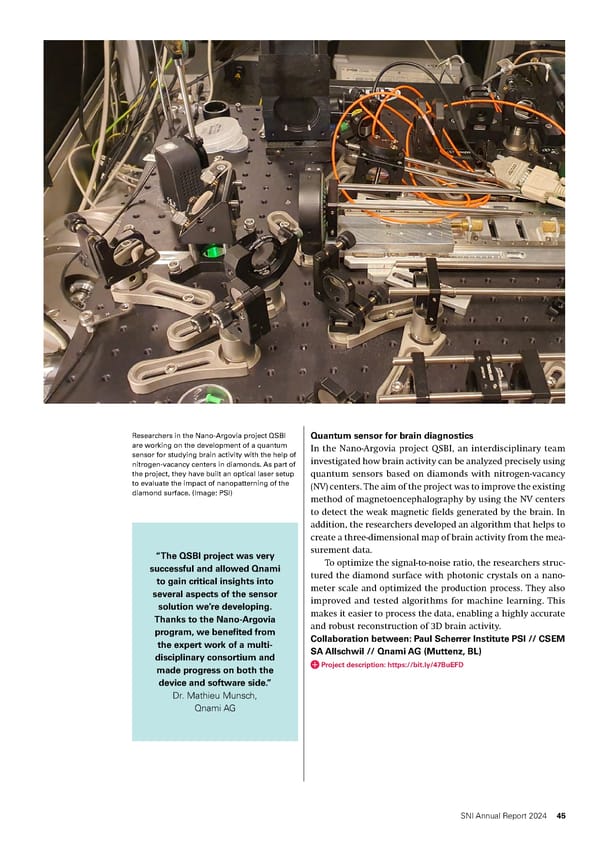Researchers in the Nano-Argovia project QSBI Quantum sensor for brain diagnostics are working on the development of a quantum In the Nano-Argovia project QSBI, an interdisciplinary team sensor for studying brain activity with the help of investigated how brain activity can be analyzed precisely using nitrogen-vacancy centers in diamonds. As part of the project, they have built an optical laser setup quantum sensors based on diamonds with nitrogen-vacancy to evaluate the impact of nanopatterning of the (NV) centers. The aim of the project was to improve the existing diamond surface. (Image: PSI) method of magnetoencephalography by using the NV centers to detect the weak magnetic fields generated by the brain. In addition, the researchers developed an algorithm that helps to create a three-dimensional map of brain activity from the mea- “The QSBI project was very surement data. successful and allowed Qnami To optimize the signal-to-noise ratio, the researchers struc- to gain critical insights into tured the diamond surface with photonic crystals on a nano- several aspects of the sensor meter scale and optimized the production process. They also solution we’re developing. improved and tested algorithms for machine learning. This Thanks to the Nano-Argovia makes it easier to process the data, enabling a highly accurate program, we benefited from and robust reconstruction of 3D brain activity. the expert work of a multi- Collaboration between: Paul Scherrer Institute PSI // CSEM disciplinary consortium and SA Allschwil // Qnami AG (Muttenz, BL) made progress on both the Project description: https://bit.ly/47BuEFD device and software side.” Dr. Mathieu Munsch, Qnami AG SNI Annual Report 2024 45
 Annual Report 2024 - Swiss Nanoscience Institute Page 44 Page 46
Annual Report 2024 - Swiss Nanoscience Institute Page 44 Page 46